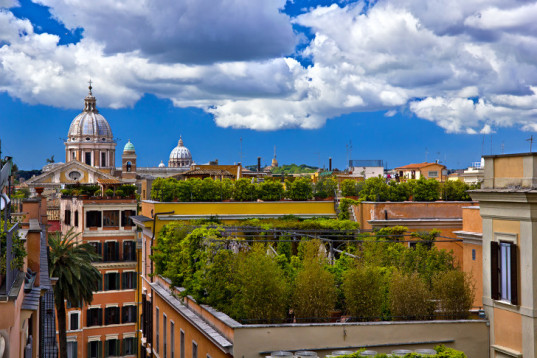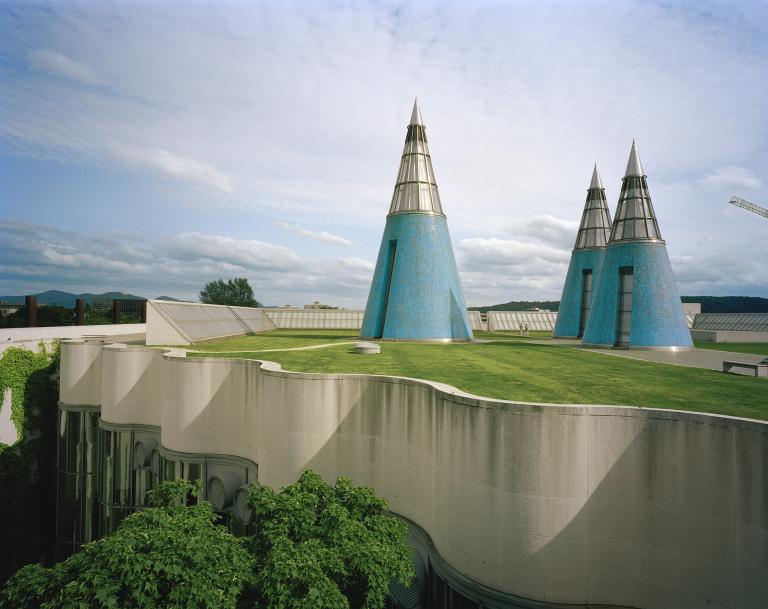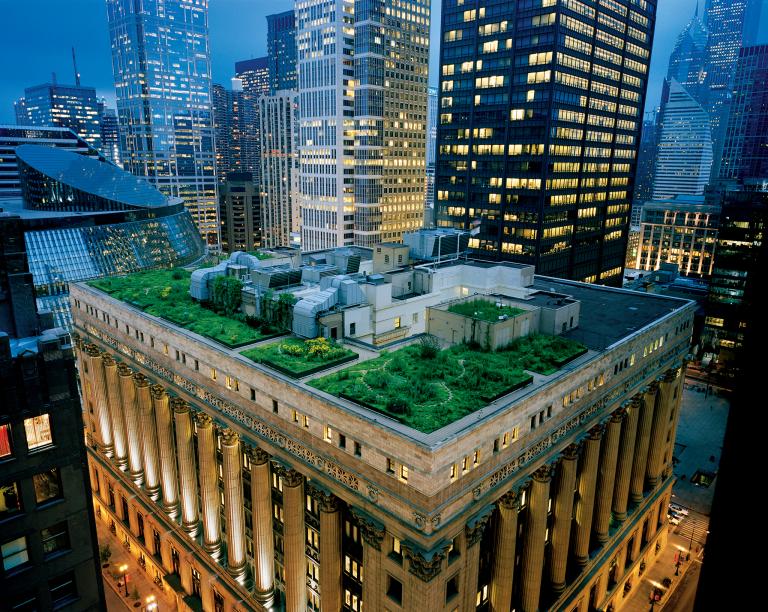Above: Chicago’s City Hall’s Green Roof (Image: National Geographic)
[divider]
A new law in France mandates that all new buildings in commercial zones need to be covered in either plants or solar panels, reports Agence France-Presse. But are the French the only ones realizing the benefits of having more green?
Green rooftops and gardens are not just beautiful to look at, they can also help minimize a lot of problems that traditional rooftops cannot. Typically, urban areas are hotter than rural areas due to the Urban Heat Island effect (UHI) – which occurs in large densely populated cities, such as New York City and Chicago, due to the energy created by the massive amounts of people and activity. According to the United States Environmental Protection Agency (EPA) The UHI can “affect communities by increasing summertime peak energy demand, air conditioning costs, air pollution and greenhouse gas emissions, heat-related illness and mortality, and water quality.”

Image: The Plaid Zebra
Green roofs use the plant’s daily dew and evaporation cycle to cool cities and minimize the UHI effect. Additionally, green roofs can reduce the emission of greenhouse gases and capture airborne pollutants and atmospheric deposition. Green roofs are a great spot for urban agriculture to take place – communities can start their own local food system and reduce their urban footprint. Standard roofs are usually the source for heat loss in the winter and extreme heat in the summer, meaning the biggest benefit of the green roofs may be their ability to absorb heat. This way, the roofs become insulators for buildings, reducing the amount of energy (and energy costs) needed to heat or cool a building. So, why aren’t we mandating this on every building in the world? The answer is simple – it will take more “green” to be more green.
According to the EPA, the cost for a green roof would be $464,000 to install versus $335,000 for a conventional roof – that’s a pretty significant amount of money. However, the EPA also states that due to the green roofs’ ability to reduce energy costs, there would be a savings of $200,000 over it’s entire lifetime and so, would make up for the cost of the initial installment.

If green roofs still seem like too much to pay up front, solar panels might be a cheaper option for roof installment. With the average system costing about $10,000, solar panels are more affordable than having and maintaining a green roof. Most people understand why solar panels are a good investment – although they are not as nice to walk through as a lush rooftop garden – they help us conserve our use of Earth’s nonrenewable energy sources as well as help to reduce our carbon footprint. Yet, the rooftops aren’t just good for the environment. According to a new study from the University of Melbourne, subjects who take just a 40-second break to gaze at the green roofs were more productive and had improved performance and accuracy when completing tasks, making seeing more green beneficial for people in another sense. Surely, these two rooftop options will leave our planet in better health for the future generations to come, but it seems like the only way to push people towards adapting green roofs and solar panels is by making it a law – just like the French do.


Image: National Geographic
[divider]
Article Written by Mila Medonaite for Design Engine, May 29, 2015


